Today’s feature is from correspondent Dave Spaulding.
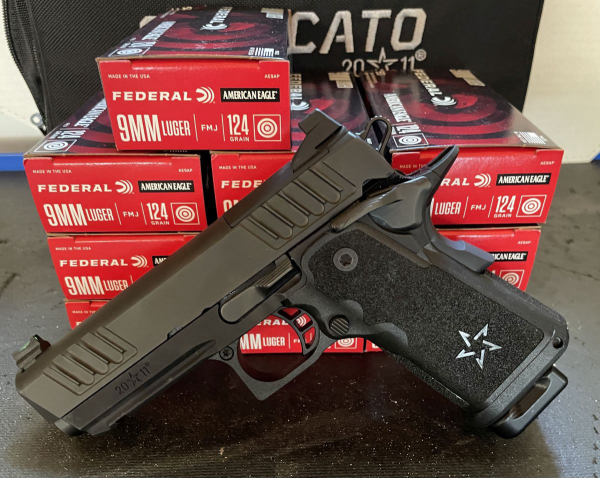
Like many folks in my age group, I am a fan of the 1911 pistol. I grew up on the teachings of Jeff Cooper and while he was not right about everything he said, he tended more right than wrong. One of the “truths” he stuck with throughout his life was his preference for the “cocked and locked” semi-automatic pistol in 45 ACP. While the 45 was not the “instant man stopper” that was claimed, the sliding single action trigger of the 1911 made it one of the easiest guns to shoot well. The path of travel follows how the index finger moves naturally and its short travel distance reduces the desire of the whole hand to “help” as trigger resistance grows, which pulls the muzzle off target. It is a forgiving trigger system that nearly anyone can shoot well.
Yes, the grip and thumb safeties make for a more complicated manual of arms, but this can easily be overcome with practice so disengaging the two devices becomes second nature. If one decides the 1911 is their preferred carry gun, then it makes sense to carry it and nothing else, avoiding the confusion possibly experienced, in a stress filled moment, because of these additional manipulations.
Today, the 1911 pistol is as popular as ever, but in a different package. The 2011 is best described as a double stack 1911-style pistol in 9mm. Instead of the old slab side slide and frame, the 2011 offers a more modern, stylish look that is highlighted by porting, scallops, serrations, wide frames and carry optics that better fit today’s shooter. While there are several companies offering 2011 models, it is Staccato that leads the pack, offering a sizable product line that should fit the needs of many handgun aficionados. Their most recent addition to this line is known as the Staccato C and it is billed as the “all around” or “do it all” model. Some are calling it the “Glock 19 of the Staccato line” and while the two are similar in size, the C is a bit larger due to its 1911 lineage.
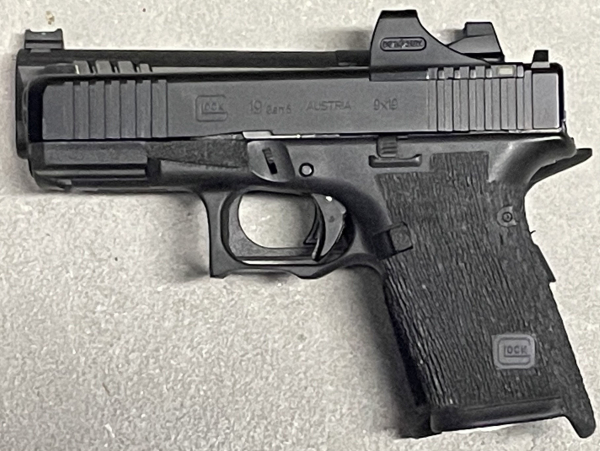
The Staccato C offers a four-inch barrel with an overall length of 7.6 inches, a width of 1.45 inches, a height of 5.4 inches (with compact grip, 5.8 inches with the full-length grip) and a weight of 26 ounces. The more ergonomic and compact grip modules are designed around Staccato’s new magazine that is purpose built for the 9mm cartridge and have proven to be quite reliable.
Other features include a fluted barrel with contour cuts on the barrel hood, that locks solidly into the slide. In addition, an all-aluminum 7075 billet precision machined “wide body” frame is flush to the slide with uninterrupted frame rails offering lubricating grooves that hold oil longer. Part of this frame is a single notch mounting rail on the dust cover for lights and lasers that is full length to accept a wider variety of units. It features textured sandpaper-style grip panels. Also, standard is a tool-less recoil system, Dawson fiber optic iron sights, carry optic cut that requires specific mounting plates and an external extractor for greater reliability and easier maintenance.
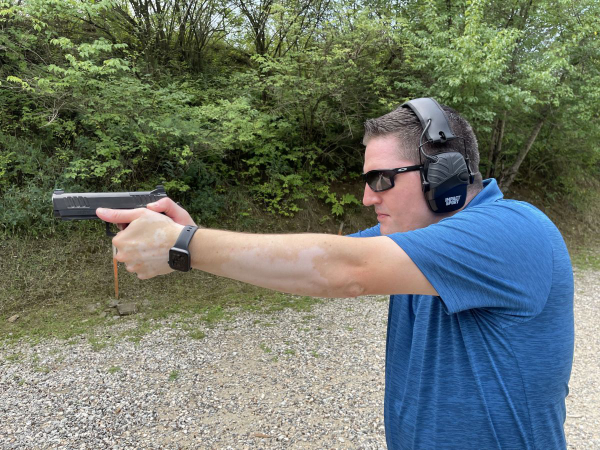
The slide on the Staccato C is not ported or contoured as found on other 2011 models. It has front and rear cocking serrations that offer a solid grasp without being overly sharp. The steel slide is coated in a proprietary black finish that is quite durable while also offering an attractive, business-like matte finish. It is a finish I personally prefer.
The trigger action on the C is short and smooth with just a slight wall. It broke my trigger scale at 4.5 pounds which I feel is perfect. The Dawson Precision fiber optic sight system offers a rear that is flat black and fully serrated which helps pull the eyes to the green glowing dot. While testing the C, I found I could do very good work with these sights, but this pistol just screams out for a carry optic. Staccato offers a series of mounting plates, also made by Dawson Precision, for the more popular carry optics like the Trijicon RMR, a favorite of mine. That said, I opted to go with the AmeriGlo Haven instead. This optic is underrated in my opinion and should be given a closer look.
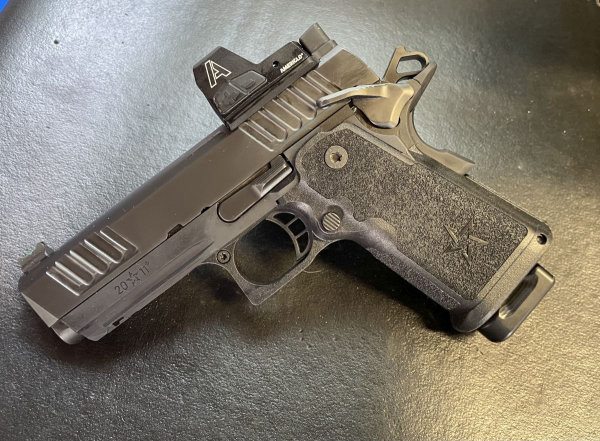
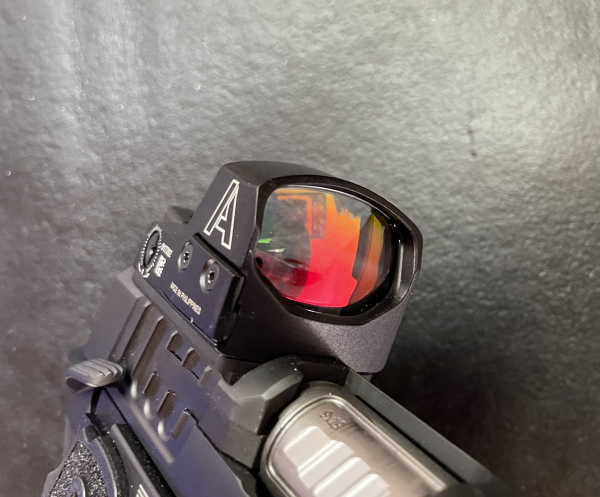
The biggest problem/fear many people have when considering carry optics is their inability to find the dot quickly and reliably. While there are several reasons why a shooter may struggle with dot acquisition, the primary reason is sloppy presentation to the target. It should be understood the shooter is not steering the optic to the target, they are pointing the muzzle, a big difference. When moving the pistol around to find the dot, it is the muzzle being moved. Unless the shooter has no ability to point whatsoever, the dot will be located just off the screen which means minimal movement is required to bring the dot into view.
Trijicon realized this when they developed their very popular SRO. Intended for competitive applications, the larger screen was not created by happenstance. Design engineers considered how much the typical shooter would likely be “off” in their presentation of the muzzle to target and built this into the size of the screen. Shooters seldom have trouble finding their dot when using the SRO which is why it is one of the most popular optics currently available, even on combat pistols.
AmeriGlo, a division of Trijicon, also realized this when they were designing the Haven carry optic and created an oblong screen. Since the Haven was intended for concealed carry and EDC applications, the SRO size screen was considered too big, but they wanted to eliminate as much “pointing error” as possible. The oblong screen allows the shooter to be a bit sloppier with their presentation while still acquiring the dot consistently.
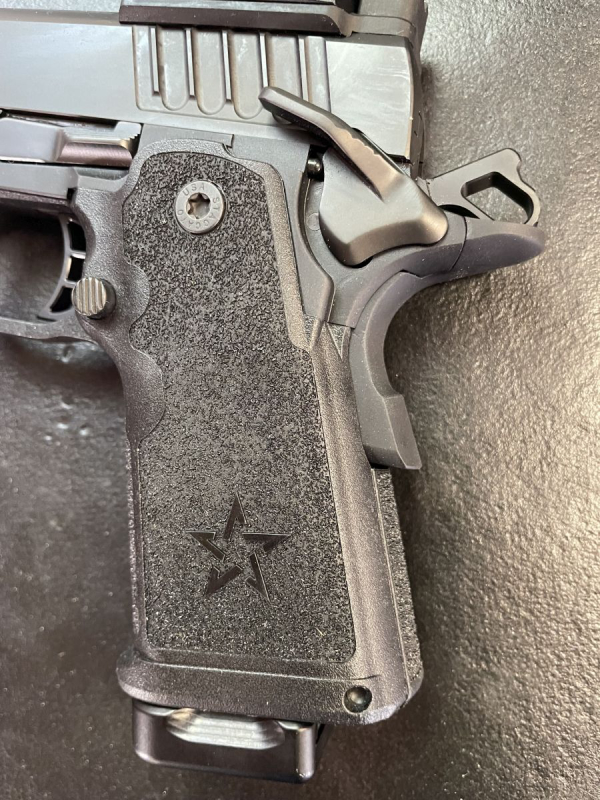
This feature is a big deal to me and I have used the AmeriGlo Haven to help new carry optics students eliminate the fear they would not be able to find their dot quickly. While the AmeriGlo Haven probably will not stand up to an upside-down drop on concrete, it is durable enough for everyday carry. I used one on a Glock 19 during my last trip to Gunsite and it worked for me quite well. I still have that optic and it is going strong.
There have been some battery issues with the Haven, but I have found that if you do not keep it on full illumination constantly - click down two levels- the battery will give a reasonable service life. It would be wise to quit trying to get the perfect level of dot illumination, it won’t happen any more than you would have the perfect view of your front iron sight. Light levels will constantly change. If you can see the dot, place it and depress the trigger. Quit trying for optimal.
After mounting the Haven on the Staccato C, I headed to the range to zero the optic. There are differing opinions on the proper method to zero a carry optic and all have some merit. I choose to zero at 10 yards as most handgun fights still occur inside this distance. I do this on a three-inch “Post It Note.” I don’t ignore a longer shot, however. Once zeroed at 10, I reconfirm my zero at 25 yards on a 3 x 5 rectangle. When I am on at both distances, I feel as if I have most possibilities covered. On this occasion I did not have to zero, the Haven was on right from the box.
I tested the accuracy of my Haven mounted Staccato C at 25 yards from a bench rest with a variety of duty-grade hollow point ammunition. The different rounds grouped between 1 ½ and 2 ½ inches leading me to believe the Staccato C is accurate enough to handle most any combative application. It is also very reliable having fired 750 rounds over two range sessions with both ball and hollow point ammo without a single hitch.
There is no doubt the new Staccato C is an excellent choice as an all-around carry pistol. That said, what about the $2,600 price tag? I think it’s only fair to leave that up to the potential buyer as only they can decide what will fit into their budget. My opinion really doesn’t matter!
— Dave Spaulding